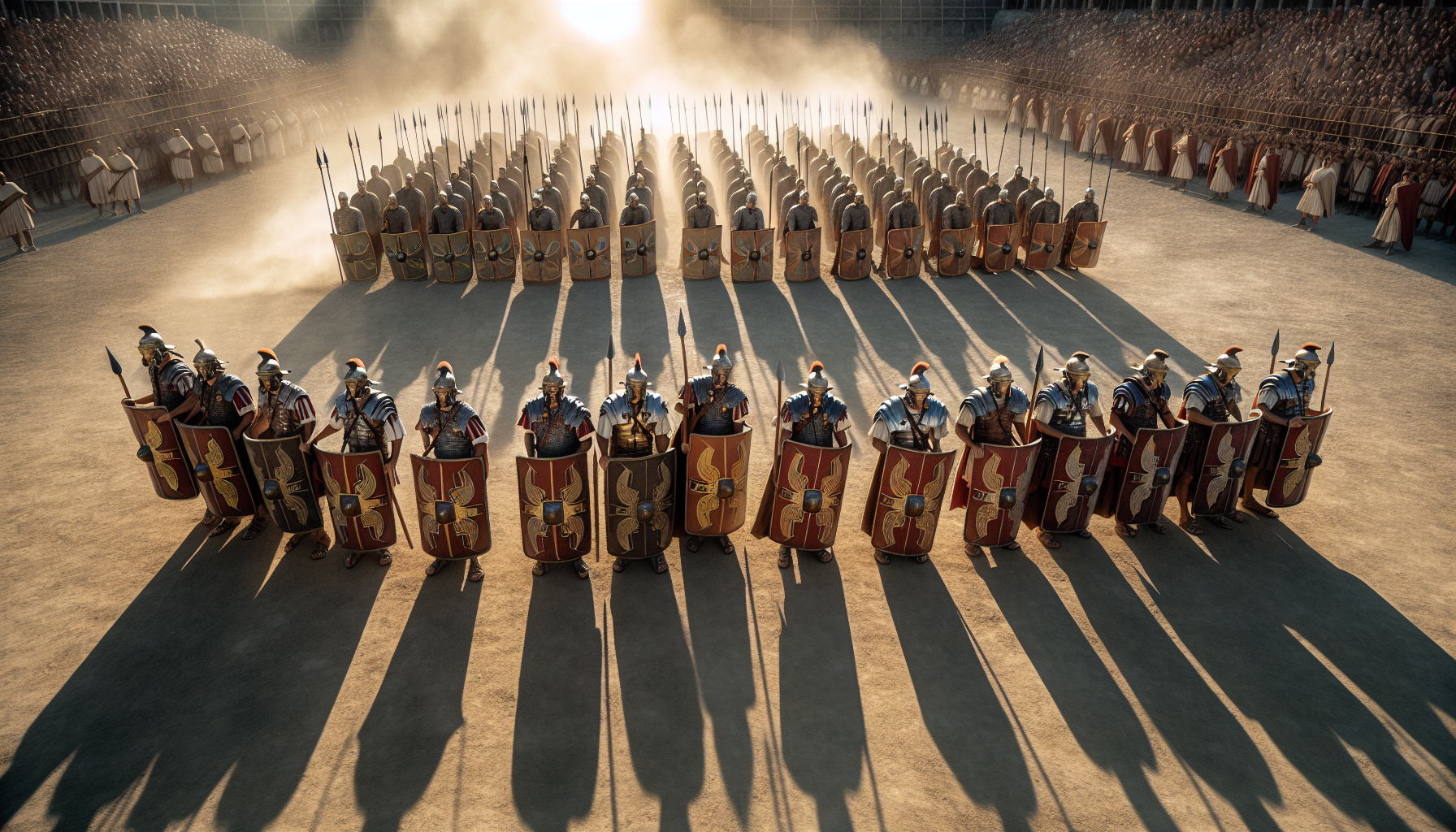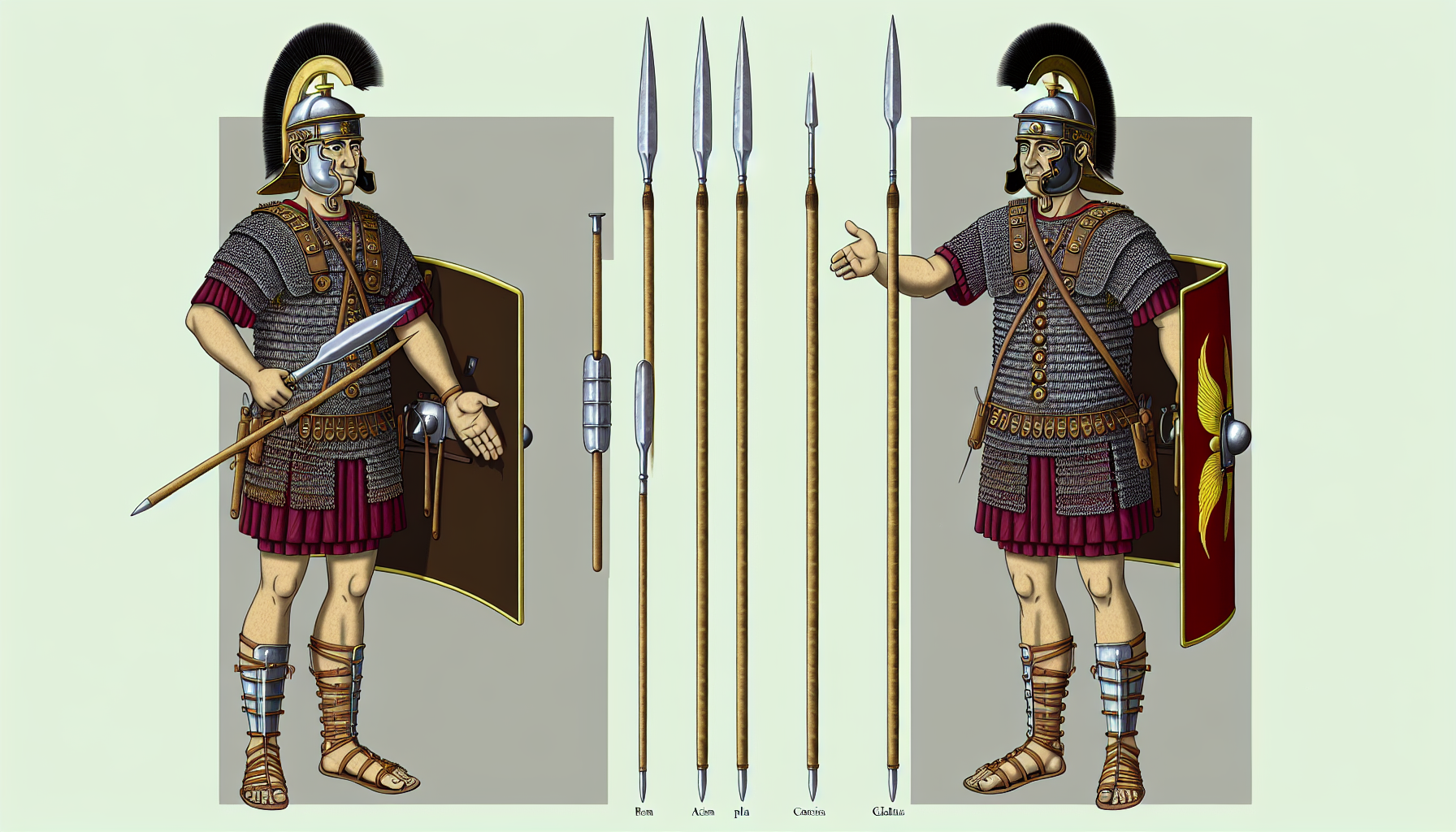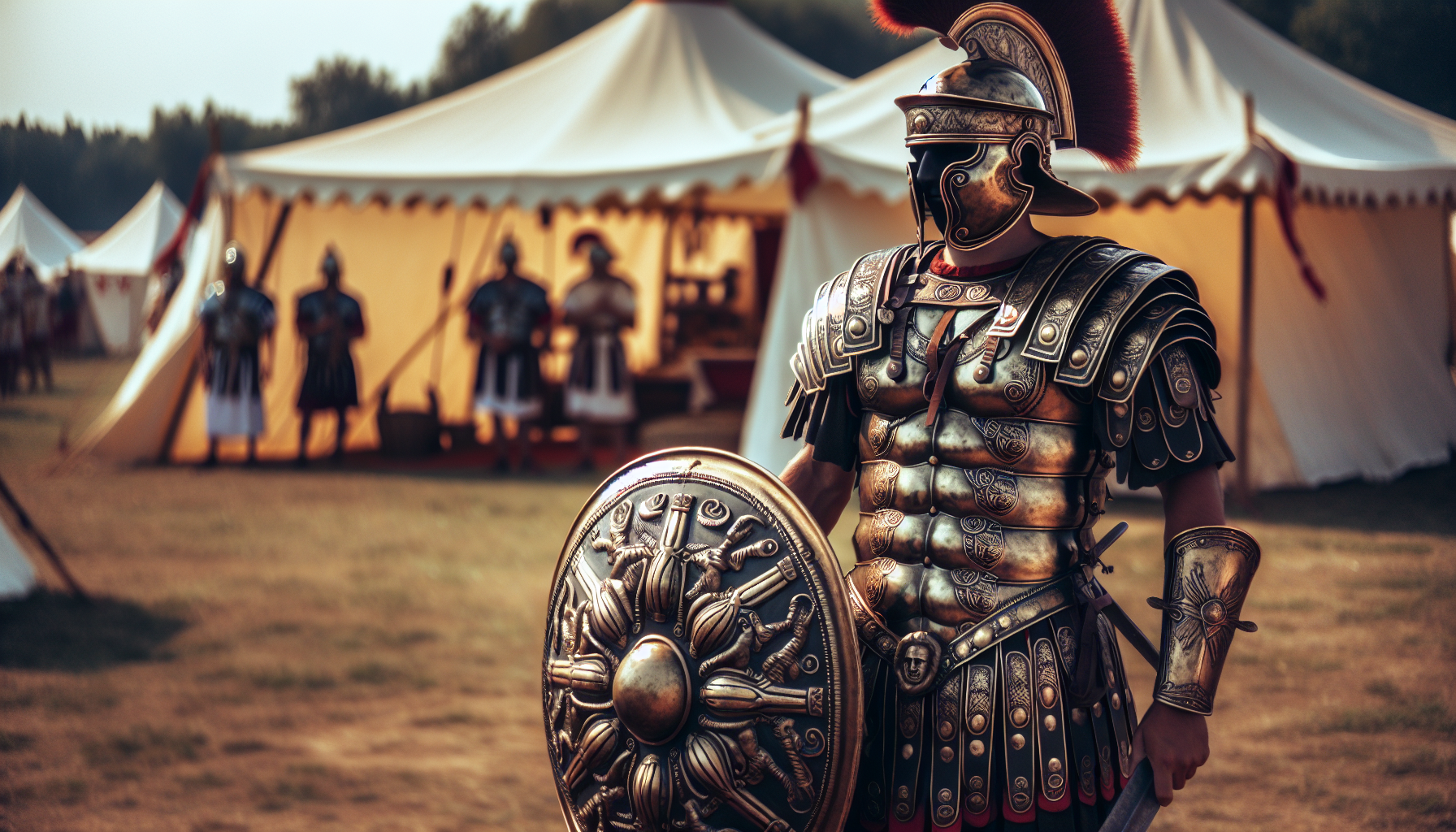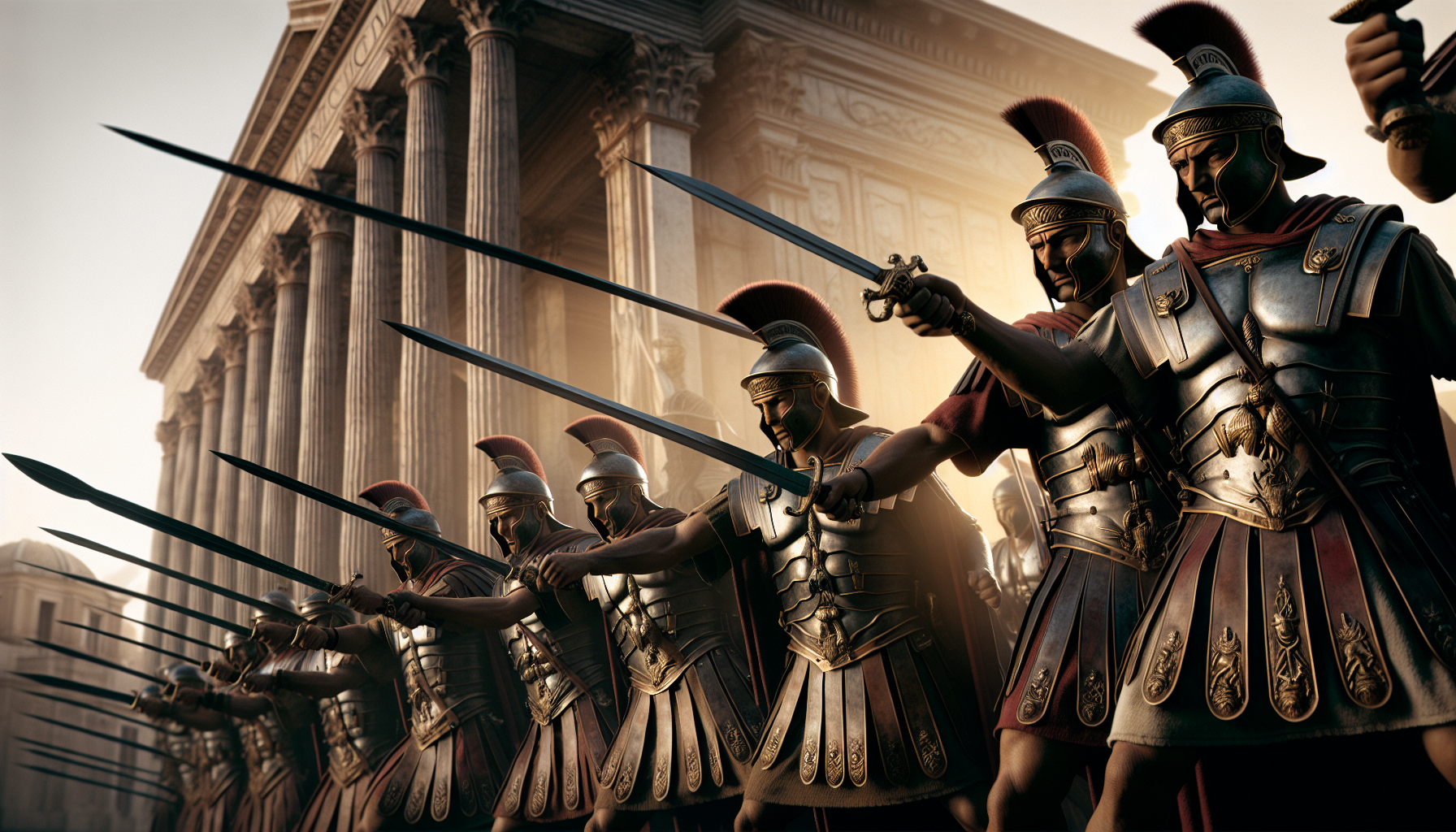The Roman army, a symbol of power and discipline, was an unparalleled force that dominated the ancient world. Among its ranks, the Principes, an elite class of soldiers, played a crucial role in shaping Rome’s military prowess. From their origins under Etruscan kings to their transformation during the Polybian reforms, these formidable warriors left an indelible mark on Roman military doctrine. But who exactly were the Principes? How did they evolve, and what impact did they make on the battlefields of ancient Rome? Prepare to journey back in time as we delve into the fascinating history and legacy of these elite soldiers.
Key Takeaways
- Principes were elite soldiers in the Roman legion whose role evolved from supporting secondary soldiers to becoming formidable forces in combat due to military reforms and developments in tactics.
- The Principes played a strategic role in Roman battle formations, functioning as the second line of defense, and were essential in tactics such as the Quincunx formation and troop rotation, which enabled the legion’s battlefield successes.
- The Principes’ legacy has had a lasting impact on military doctrine, with their disciplined approach to warfare and innovative tactics informing both the Roman military’s effectiveness in antiquity and the principles of modern warfare.
The Evolution of Principes

Principes emerged from the vestiges of the second class of the army during the reign of the Etruscan kings. Under the leadership of Marcus Furius Camillus, their transformation process set in motion, evolving over centuries through numerous battles and reforms. As spearmen, and later swordsmen, they earned their place in the annals of Rome’s military history, serving with distinction in the armies of the early Roman Republic.
Their evolution was marked by significant milestones, such as the transition from throwing spears to swords, reflecting the changing tactics and requirements of the Roman military. Over various eras of Roman history, the Principes underwent significant developments, transitioning from secondary soldiers to an elite force that became the backbone of the Roman legion.
Etruscan Kings Era
During the era of the Etruscan Kings, the Principes served as secondary soldiers, providing support to the more heavily armed first-class infantry. The military organization of the Roman army at this time comprised 3,000 infantrymen and 300 cavalrymen, operating on the basis of an annual levy.
As the Romans evolved their military tactics, so too did the equipment of the Principes. The Polybian reforms led to enhancements in their weaponry, transitioning from throwing spears to swords, a shift that mirrored the evolving requirements of the Roman military.
Polybian Reforms
The Polybian reforms instigated profound changes in the Roman army’s structure and organization, significantly altering the Principes’ typical armaments. Now equipped with throwing spears, referred to as pila, and short swords known as gladii, the Principes became an even more formidable force on the battlefield.
These reforms also altered the Principes’ position in the Roman legion. They were placed behind the Hastati and in front of the Triarii, forming a cohesive line of defense. This arrangement facilitated effective communication and coordination between different units during battle. This organization also underscored the distinctive sequence of battle, in which the Hastati initiated the attack, followed by the Principes, and, if necessary, the Triarii, demonstrating the strategic placement of these units on the battlefield.
Late Roman Republic
The Late Roman Republic marked a significant period of change for the Principes. The standardization of weapons and responsibilities implemented by Gaius Marius led to the diminishing of unique Principes units. After the Marian Reforms in 107 BC, the Principes were disbanded. This change had a significant impact on the Roman military structure..
Gaius Marius enacted significant reforms, one of which was the abolition of property requirements for military enlistment. This opened the doors of the army to individuals from lower social strata, leading to the disbandment of distinct Principes units. Despite this, the Principes had already carved out their place in Roman military history, leaving an enduring legacy.
Principes in Battle Formation

On the battlefield, the Principes were strategically placed in the second battle line. When the first line was defeated, their role proved crucial, as they were assigned to launch a counter-attack against a weary enemy. This strategic placement was instrumental in numerous Roman victories, showcasing their effectiveness in combat.
Similar to the Hastati, the Principes were organized into units of 10 men, with 120 soldiers in each unit. This organization allowed for efficient communication and coordination within the ranks, further enhancing their effectiveness on the battlefield.
Quincunx Formation
The Principes, positioned in the second line, played a critical role in the distinctive Quincunx formation, a vital part of the Roman battle strategy. This formation afforded the Roman army enhanced flexibility in warfare, facilitating easier maneuvering and the capacity to adjust to varying circumstances.
Within the Quincunx formation, the Principes were positioned behind the Hastati, who were the youngest and least experienced soldiers in the front line. This strategic placement allowed the Principes to provide support and reinforcement when needed, showcasing their crucial role within the Roman military.
Coordination with Hastati and Triarii
During the intense battle, the Principes, Hastati, and Triarii worked together, implementing a troop rotation strategy. This ensured that fresh soldiers were consistently positioned at the forefront, maintaining the strength and momentum of the Roman forces.
The Roman army had different classes of soldiers with specific roles and responsibilities. These included:
- Hastati: Usually younger soldiers, they were responsible for taking the front position and initiating engagement with the enemy.
- Principes: These soldiers formed the second line of defense and provided support to the Hastati.
- Triarii: Experienced veterans, they formed a strong defensive line to support the Hastati and Principes.
This strategic rotation and mutual defense among the classes were pivotal strategies for ensuring effective cooperation on the battlefield.
Tactics and Strategies
On the battlefield, the Principes employed several tactical maneuvers, including the testudo formation, the triple line formation, and the wedge formation. These tactics enabled them to effectively engage the enemy, disrupt their formations, and maintain a strong defense.
In offensive battles, the strategies of Principes were centered on seizing the initiative, conducting assertive assaults, and capitalizing on vulnerabilities in the enemy’s defenses. On the other hand, in defensive battles, their strategies revolved around upholding a robust defensive stance, maintaining their position, and thwarting enemy offensives.
Equipment and Training

Armed with gladii for close combat and two pila – heavy javelins used to disrupt enemy formations before melee engagement, the Principes were well-prepared for battle. Their equipment included:
- Gladii for close combat
- Two pila for disrupting enemy formations
- Large shields for defense
- High-quality armor, typically incorporating chainmail during the early 3rd and late 4th centuries BC
This combination of weapons and armor made the Principes a formidable force on the battlefield, in a similar fashion to other elite units of their time.
In addition to their equipment, the Principes were subjected to intense training and strict discipline. They were expected to demonstrate exceptional skills and maintain high standards of discipline within the legion. Their training regimen included exercises designed to enhance strength, endurance, and agility, preparing them for the challenges of the battlefield.
Weapons: Two Pila and Gladius

The Principes’ typical armament consisted of two types of weapons: the pilum and the gladius. The pilum, a throwing spear, was designed to deform upon striking enemy shields, rendering them ineffective. It typically weighed between 5 to 10 pounds and measured approximately 2 meters in length.
The gladius, on the other hand, was a short sword that was lethal in close-quarter combat. Its shortened length allowed for swift and deadly strikes, making it a strategic weapon for delivering thrusts and short cuts. These weapons, combined with their large scutum shields, made the Principes a formidable force on the battlefield.
Armor and Protection
Equipped with large shields and high-quality armor, the Principes were well-defended in battle. The Montefortino helmet, commonly worn by Principes, offered additional protection. They also utilized the scutum, a curved oval shield constructed from two sheets of wood, which provided further defense against enemy attacks.
Despite similarities in armor with other Roman soldiers, the Principes stood out due to their role and position within the legion. As Roman legionaries, they were frequently at the forefront of battles, requiring them to be well-armed and protected against enemy assaults.
Training and Discipline

The training regimen for the Principes posed a considerable challenge. It comprised exercises designed to enhance strength, endurance, and agility, including running, jumping, climbing, and calisthenics. Moreover, they received extensive training in marching, often covering 20-25 miles a day in full gear.
Discipline among the Principes was maintained through a structured combination of rigorous training, an established hierarchical command structure, and the imposition of penalties for non-compliance. This ensured the maintenance of order and operational efficiency within the units. These disciplined warriors were expected to demonstrate exceptional skills, reinforcing their importance within the Roman Army.
Notable Battles and Achievements
The Principes played a pivotal role in numerous significant battles throughout Roman history. For instance, their participation in the Battle of Cannae highlighted their effectiveness and strategic significance within the Roman army. Their battlefield tactics, including:
- the manipular formation
- testudo
- triple line
- wedge
Their battlefield successes were greatly contributed to by the equipment they carried.
Other notable battles where the Principes demonstrated their valor and expertise include the Battle of Zama and the Battle of Magnesia. Their tactical prowess and disciplined formations were significant contributors to the Roman military’s victories, highlighting their crucial role in the Roman army.
Battle of Cannae
The Battle of Cannae, which took place near the ancient village of Cannae in southeastern Italy in August 216 BCE, holds significant historical importance. This battle marked a decisive victory for the Carthaginian general Hannibal over the Roman army. The commanding officers were the Roman consuls Lucius Aemilius Paullus and Gaius Terentius Varro, along with the Carthaginian general Hannibal Barca.
Hannibal utilized the tactic of Double Envelopment, surrounding the enemy on both sides to create a lethal trap. This maneuver is widely regarded as one of the most effective tactical maneuvers in military history and significantly contributed to the Roman defeat.
Despite the loss, the Principes fought valiantly, demonstrating their bravery and skill on the battlefield.
Siege of Alesia
The Siege of Alesia was another significant battle in which the Principes played a crucial role. They formed part of the Roman forces under Julius Caesar’s leadership, contributing to the military strategy of constructing fortifications around the besieged settlement to aid in the siege.
The Principes utilized the tactic of establishing a fortified encirclement by:
- Building ditches, walls, and watchtowers around the town of Alesia
- Preventing the enemy from escaping
- Playing a significant role in the success of the siege
Their intensive training enabled them to proficiently carry out intricate siege tactics, and their advanced siege machinery and weapons provided them with a strategic advantage in breaching Alesia’s defenses.
Other Significant Engagements
There were other significant engagements where the Principes showcased their valor and expertise. At the Battle of Zama, they played a significant role by:
- Forming the second line in the Roman army
- Providing a heavily armored and disciplined infantry force
- Utilizing tactical maneuvers and close combat capabilities
- Supporting Scipio Africanus’ strategies to defeat Hannibal’s Carthaginian army
Another notable battle was the Battle of Magnesia, where the Principes fulfilled the role of experienced support soldiers. Positioned behind the younger hastati, their strategic responsibilities encompassed bolstering the front line and enhancing the overall fortitude and efficiency of the Roman formation in combat.
The Legacy of Principes
The legacy of the Principes extends far beyond their time. Their influence on the Roman military doctrine is evident in the discipline, organization, and innovation of the Roman army. Their tactics and strategies made a significant impact on the development of Roman military practices, setting the course for future military practices and leaving an imprint on modern warfare.
The success of the Roman Empire can be attributed to:
- The functional military contributions of the Principes
- Their crucial role as the second line of infantry in the Roman army
- Their tactical prowess and discipline, which were significant factors in the military victories of Rome
- The organization and innovation of the Roman army
These contributions were pivotal in the empire’s success.
Influence on Roman Military Doctrine
The Principes had a profound impact on the Roman military doctrine. As the elite core of the Roman legion, they held a pivotal position in battle formations and tactics, shaping the overall strategy and organization of the Roman military through their presence and effectiveness. Their methods were integrated into subsequent Roman military doctrine, influencing the development of Roman warfare.
The expertise and effectiveness of the Principes in battle significantly influenced the tactics and strategies adopted by later legions and cohorts. Their discipline, organization, and tactical prowess set the benchmark for future Roman military units, embodying the core values of the Roman legion.
Modern Warfare Comparisons
The strategies and tactics utilized by the Principes have influenced modern warfare deeply. The Romans’ adaptability and their utilization of organized formations, siege warfare, and naval tactics have been the subject of study and emulation by military forces across different eras. Their emphasis on strategic planning and adaptability to evolving weapons technology have been acknowledged as valuable teachings for contemporary military forces.
The role of the Principes in ancient Rome does not have a direct comparison to the role of modern Special Forces. However, the principles of war they employed serve as guiding principles for modern military operations. These principles include:
- Unity of command
- Objective
- Offensive
- Mass
- Economy of force
- Maneuver
- Security
- Surprise
- Simplicity
These principles contribute to the attainment of success on the battlefield.
Summary
Throughout the annals of history, the Principes stand out as an elite class of warriors who helped shape the Roman military’s prowess. Their evolution, battle strategies, equipment, and significant engagements underscore their pivotal role in the Roman army. Their enduring legacy, reflected in Roman military doctrine and influencing contemporary warfare, testifies to their significant contribution to the success of the Roman Empire. As we delve into the ancient battles and tactics of these formidable soldiers, we are reminded that the echoes of their discipline, bravery, and tactical expertise continue to resonate in the annals of military history.
Frequently Asked Questions
What is the meaning of princeps?
Princeps refers to the head of the state under the Roman Empire and also means “first in time or order; the first, foremost, chief, the most eminent, distinguished, or noble.” It was a title used by the Roman emperors from Augustus to Diocletian.
Who were the Hastati and principes?
The Hastati were the front-rank spearmen and the most recent recruits used for skirmish or initial contact, while the Principes were the experienced soldiers in the armies of the early Roman Republic, known for carrying large shields and wearing good quality armor.
What are the princeps in Roman law?
In Roman law, the princeps was a leading figure, particularly the emperor, who held a position with super-imperium, outranking other magistrates and exerting significant influence on the development of the law. This title was used by the Roman emperors from Augustus to Diocletian, establishing the principal imperial system in Ancient Rome.
How old were principes?
Principes, the spearmen and swordsmen in the early Roman Republic’s armies, were typically men in their mid to late twenties, in the prime of their lives, considered to be at the highest point of vitality. They were older than the hastati but younger than the triarii.
Where is the island of Príncipe?
Príncipe Island is located in the Gulf of Guinea, off the west coast of Central Africa, and is part of the So Tomé and Principe archipelago. It is the smaller, northern major island of the country.
